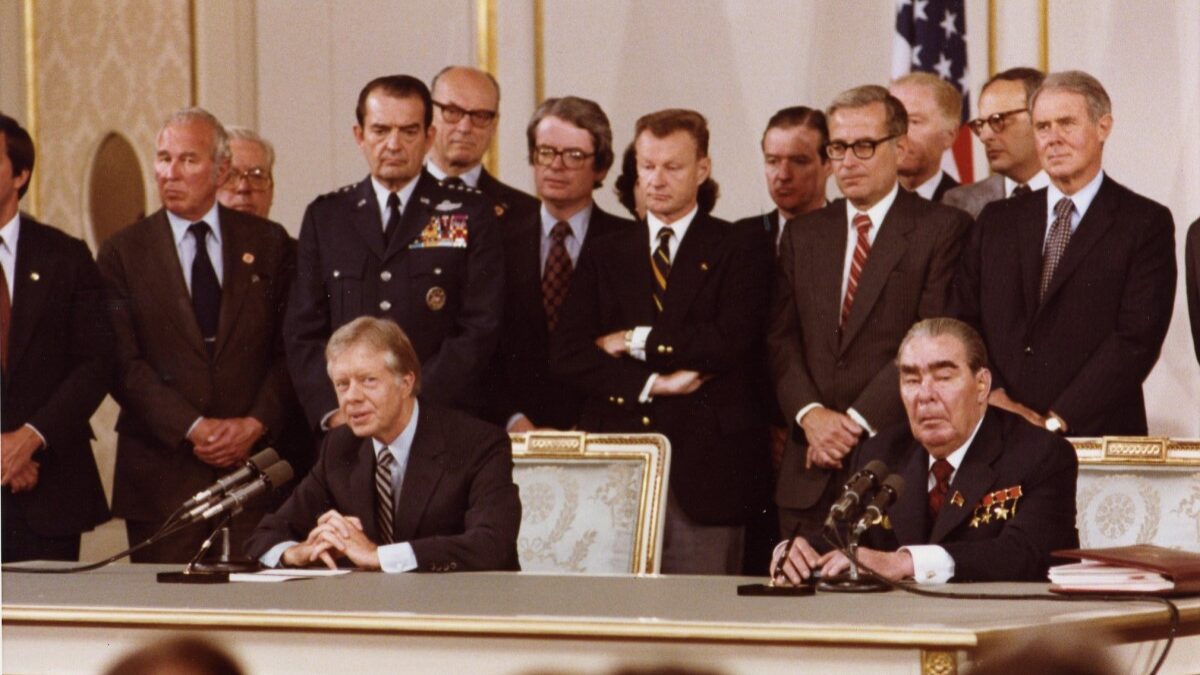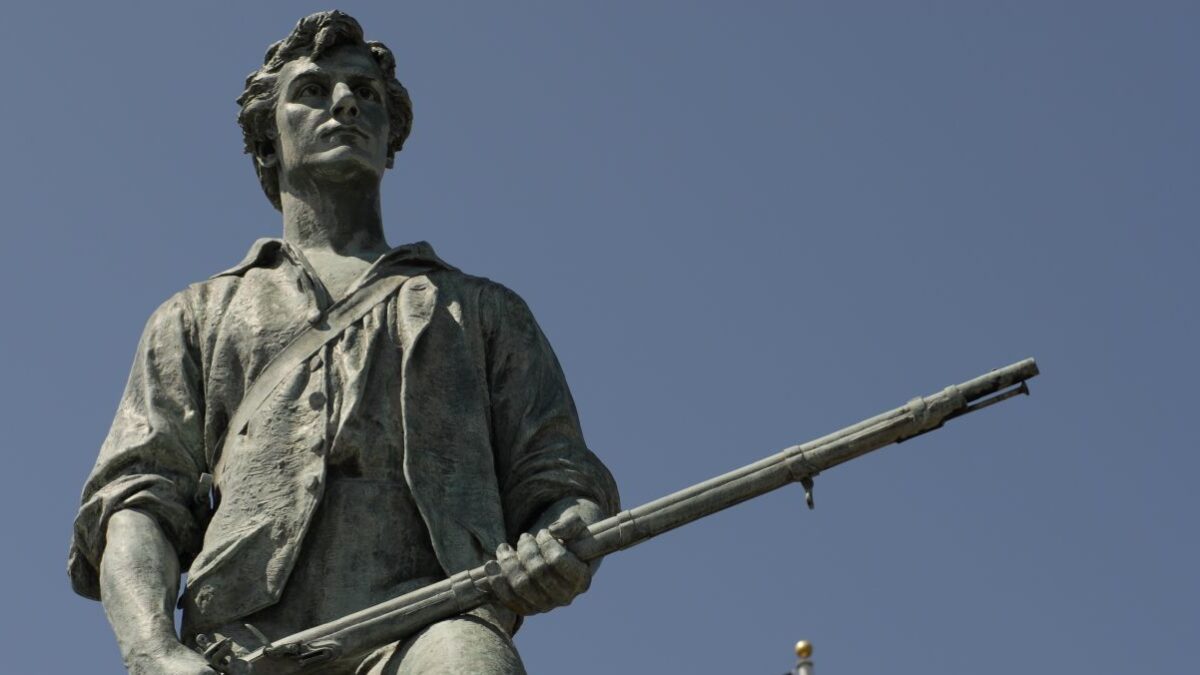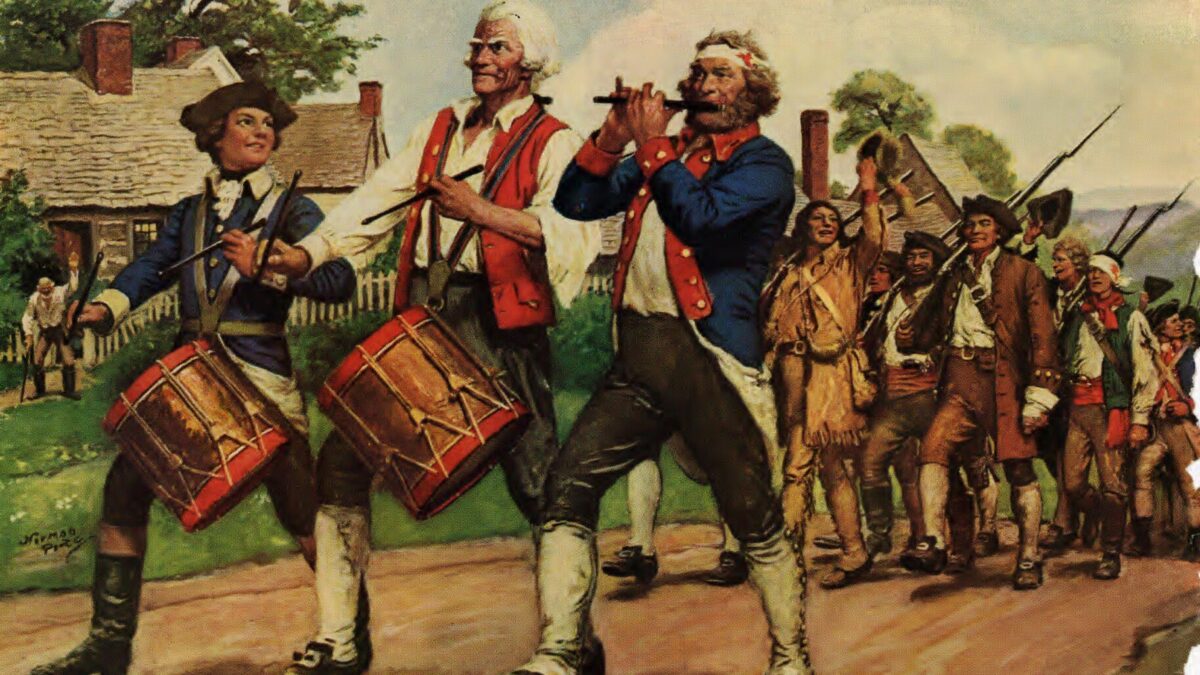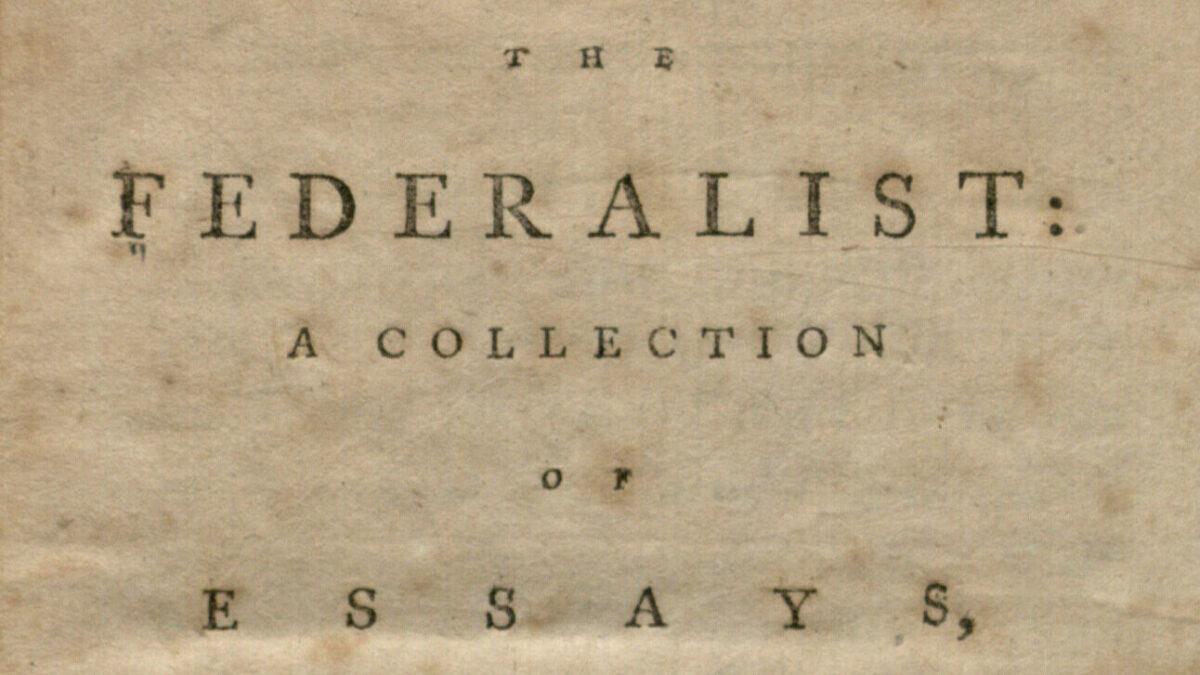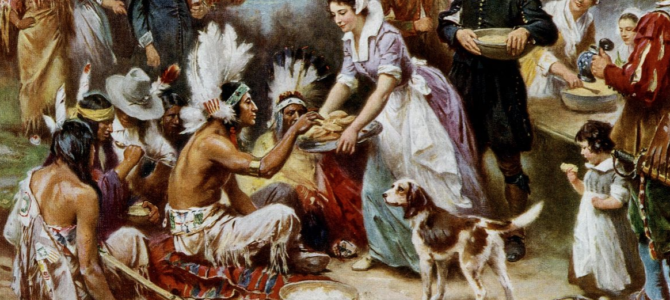
Where was the first Thanksgiving? Like centuries of Americans, I grew up hearing that America’s first Thanksgiving took place in New England with the Pilgrims.
“Our harvest being gotten in, our governor sent four men on fowling, that so we might after a special manner rejoice together,” Pilgrim Edward Winslow wrote in December 1621 of a Thanksgiving feast, which one might call “friendsgiving” today.
Earlier that year, in April 1621, after suspicious surveillance of each other, the Pilgrims and the Wampanoag had entered a peace treaty that prevented war. The Wampanoag had lost as much as 90 percent of their tribe to a plague in the preceding years brought unknown by Europeans. The Pilgrims had lost 45 of the 102 Mayflower passengers. Both sides were highly motivated to survive at the time, and their treaty staved off war for 54 years.
“[M]any of the Indians coming amongst us, and among the rest their greatest king Massasoit, with some ninety men, whom for three days we entertained and feasted,” Winslow also wrote of their 1621 feast, crediting the goodness of God for their bounty.
Giving thanks was a top reason for celebrations among the Wampanoag and other native people of North America. Also contributing to that first joint feast, the Wampanoag “went out and killed five deer, which they brought to the plantation and bestowed on our governor, and upon the captain and others,” Winslow noted in 1621.
Virginia’s Claim to the First Thanksgiving
After moving to Virginia, I discovered that Virginia also has a claim to Thanksgiving fame. “We ordain that this day of our ship’s arrival … in the land of Virginia, shall be yearly and perpetually kept holy as a day of Thanksgiving to Almighty God,” prayed Capt. John Woodlief upon landing 38 Britons on Dec. 4, 1619, two years before the Pilgrims’ first feast.
If Virginians celebrated Thanksgiving first, how did Plymouth’s Pilgrims earn the distinction of being first? A famine and a massacre ended the annual Thanksgiving tradition in Virginia after three years. Documents proving the first Virginia Thanksgiving also weren’t known until 1931.
“First Thanksgiving in America Was Decreed for Town of Berkley on James [River],” the Richmond News Leader published April 3, 1931, after President John Tyler’s son Lyon first deciphered the Berkeley papers tucked away at a New York library.
Fervent Floridians called an audible. They saw a pattern. If new arrivals to Massachusetts and Virginia gave thanks, then didn’t the Spaniards who founded St. Augustine, Florida, in the 1500s surely do the same? They were correct.
Don’t Forget Florida and Texas
Under blaring trumpets with 800 Spaniards, Pedro Menéndez de Avilés waded ashore in Florida on Sept. 8, 1565. His priest led a Thanksgiving Mass in Spanish and held a feast with the native Timucuas.
What if the real first Thanksgiving wasn’t over seafood but BBQ? This possibility took me deep into the heart of my native Texas. “On May 29, 1541 with supplies depleted Coronado entered Palo Duro Canyon,” a 1973 Texas historical marker declared about the expedition of Francisco Vázquez de Coronado. This Spaniard arrived in the canyon near present-day Amarillo, Texas, after a series of failures and controversial battles with native tribes.
Fifteen months earlier, Coronado had left present-day northern Mexico with 300 Spaniards and 1,000 native tribes, many against their will, in search of the golden Seven Cities of Cíbola. Although they’d battled the Zuni Pueblo natives in New Mexico, by the time Coronado’s expedition arrived in the land of the Tejas, they were desperate to survive, not fight, especially after a hail storm damaged their supplies and horses.
They called these natives the Tejas, a Spanish adaptation of a Caddo name, “taysha,” meaning friend or ally. The Tejas also told Coronado the harsh truth: He hadn’t arrived in the city of gold after all. Coronado realized he needed to regroup and reprioritize.
“According to legend, Fray Juan De Padilla conducted a feast of Thanksgiving for the group while in Palo Duro Canyon,” the Texas historical marker concludes. The friar led the Spaniards in the Ascension Mass. They feasted on buffalo, which suggests the first Thanksgiving by Europeans in America was a barbecue. He divided his entourage, sending some back to Mexico and others to present-day Kansas.
Using the feast to prepare for their journey, they “killed 500 bulls,” according to a captain, who admired the hunting skill of the Tejas. They even had leftovers, “preparing jerked beef to take with them.”
Thanksgiving Becomes a National Holiday
Despite these first Thanksgivings in Texas and Florida, the Pilgrim tradition was considered the source of our annual event because state governors set aside different days of celebration. Keeping the Pilgrims’ history alive made the tradition survive.
“This was the first Thanksgiving in Massachusetts,” the Massachusetts’ Salem Gazette published about the Pilgrims on Nov. 25, 1813. “Our annual Thanksgivings have been observed from the first settlement of the country. May this institution be ever held sacred.”
When did Thanksgiving become a national holiday? In November 1863, a few months after the Battle of Gettysburg, in which thousands died or were injured, President Abraham Lincoln declared the first uniform, annual national Thanksgiving to be the last Thursday in November.
A Thanksgiving prayer published by New York’s Jewish Messenger on Nov. 20, 1863, for Lincoln’s first Thanksgiving shows the healing power of giving thanks in divisive times:
To him, enthroned on high, be the glory, the praise, the Thanksgiving! In humility and sincerity we bow … and offer him a hymn of thankfulness, that the nation has not been prostrated … but that it is emerging from the ordeal stronger and better than ever.
Why Do We Celebrate Thanksgiving?
What do all these “first” Thanksgivings have in common? They show that giving thanks is healing, for saints and sinners and those in between, whether it was from survivors in the North and South in the 1860s, in Texas and Florida in the 1500s, in New England and Virginia in the 1600s, or the natives in North America giving thanks to the creator on special occasions.
They also reveal people’s sacrifices for survival, religious freedom, and economic security, and their desire for a better or new life. Thanksgiving brought the first Americans together and brings Americans together today, especially those new to freedom.
“After I got here in America, my life completely changed as a free person. Before in North Korea I would probably have died of starvation, but now I’m a college student and have a dream. … So I feel very grateful and thankful to America to grant us freedom,” immigrant Grace Jo told “Fox & Friends” earlier this month.
Whether we feast on turkey, seafood, or barbecue, may Thanksgiving 2019 enable us to count our blessings today, give thanks for the good in our past, and strengthen us for tomorrow.


